How To Clean Your Gas Fireplace
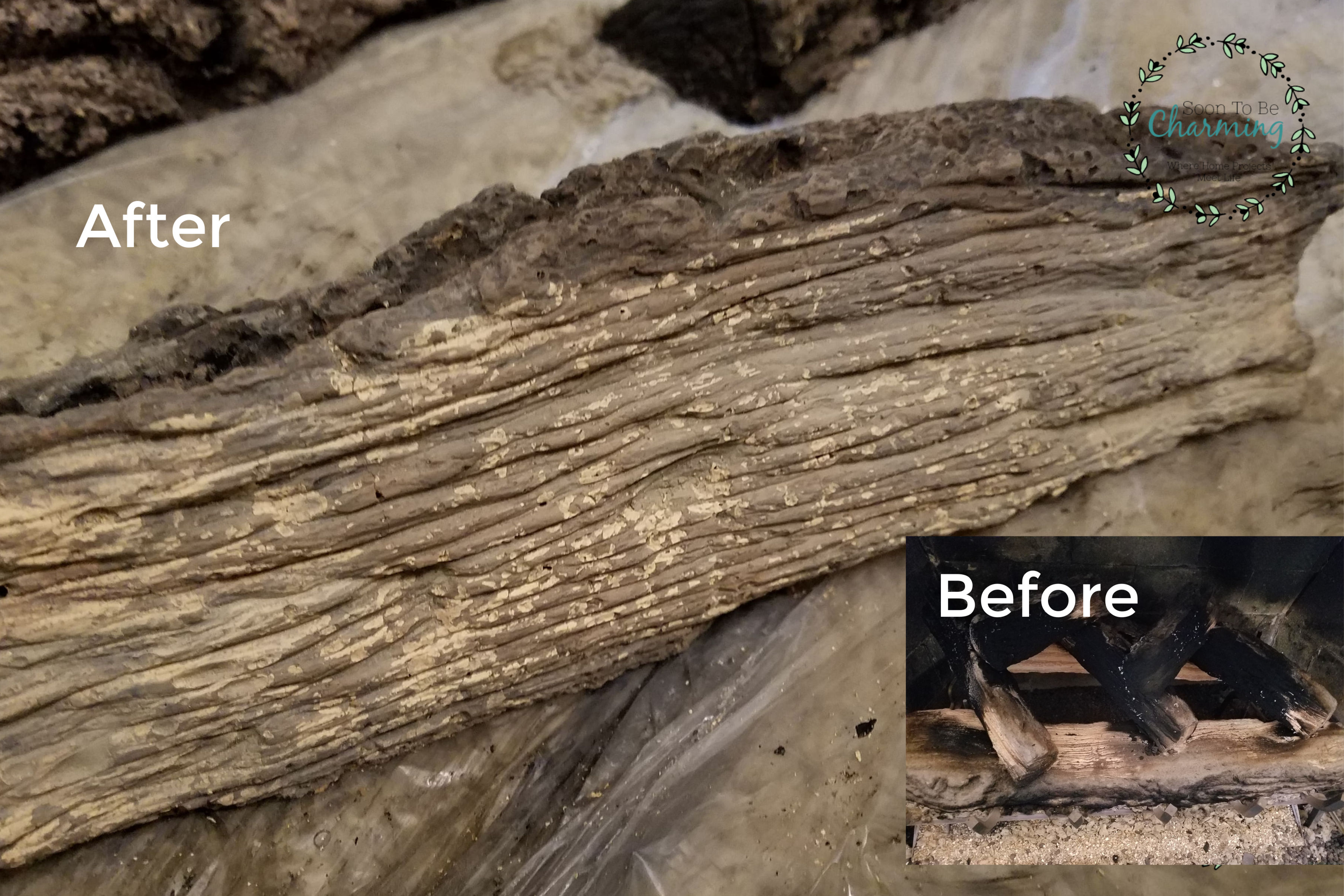
Jumping knee deep in soot and cleaning my fireplace isn’t normally my idea of a great Friday afternoon, but it had to be done! So there I was staring at the black soot in and outside of my fireplace. I did a lot of research on how to clean your fireplace and on techniques to remove soot. It surprised me how many different products people use. Since this is my first time cleaning my fireplace, I thought I would try a couple different ways and see how they worked.
In Part 1, I showed you how I emptied the fireplace. Here is a flashback just to remind you what it looked like! Yikes!
This post contains affiliate links, which means if you click on or make a purchase I may receive a small commission at no extra cost to you.
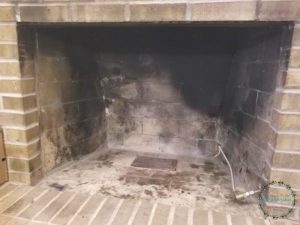
Cleaning The Brick
I wanted to start with a technique I saw using baking soda. To begin, grab a bowl full of warm water and a nylon bristle brush.
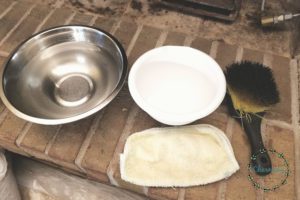
Then wet down all of the bricks with your warm water.
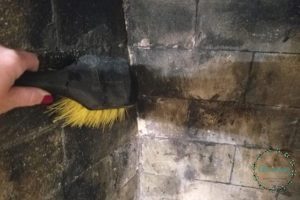
Once all the brick is wet, dab a cloth in the warm water and then the baking soda. Scrub the baking soda into the brick and leave for a few minutes.
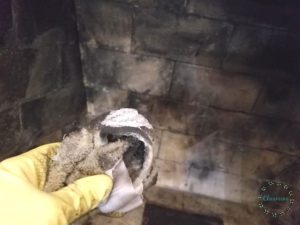
I was running a little low on baking soda (which I am sure affected my results), but it didn’t seem to be taking the soot off as well as I wanted. It may also just be a better technique for the outside of the fireplace, where there isn’t as much soot.
So I switched to another technique sprinkling comet on my nylon brush, dipping it into a bowl of warm water that was mixed with a tbsp of CLR. The first thing I noticed is the paste foamed up much better on the brick.
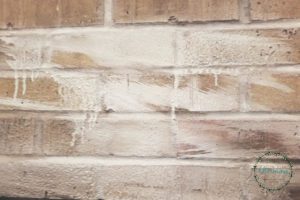
Scrubbing the Comet mixture on the soot turns it into a gray paste. Let it sit for a few minutes then dip your nylon brush into clean warm water and scrub the paste off.
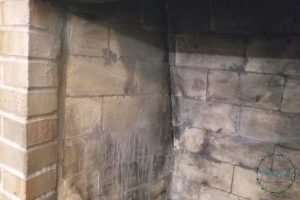
Keep repeating this step until your brick looks clean. It took scrubbing the brick with 4 coats of clean water to remove the gray haze.
If you just use comet, it will leave a film on the bricks…the CLR helps remove that film. Of course I learned that the hard way because we didn’t have CLR in the house and at first I just used comet and water. Sometimes you just need to learn by trying.
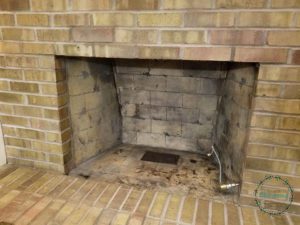
Cleaning The Gas Logs
To clean the gas logs, we started with vacuuming the dust off.
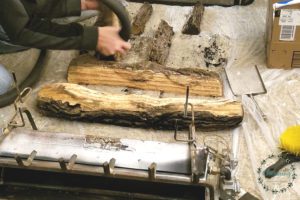
The vacuum surprisingly removed a lot of soot also.
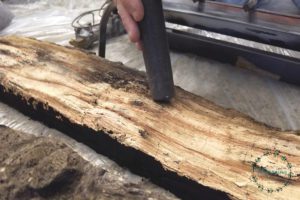
To clean the logs the rest of the way, we brought them over to the sink and scrubbed them with soap and water.
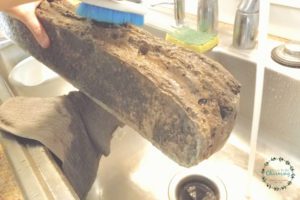
After scrubbing them, we (my hubby and I) laid them out on a towel to dry.
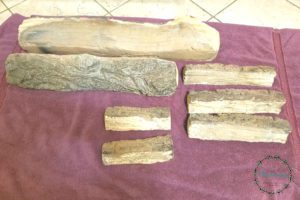
With the soot removed and the gas logs cleaned, I thought I was ready to put my fireplace back together. Yes, thought being the optimum word.
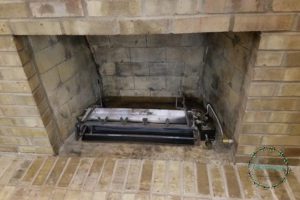
I began by putting the burn pan back into the fireplace, adding the vermiculite and then the logs.
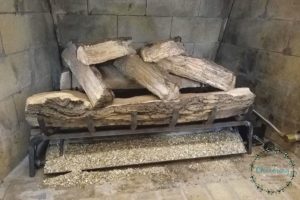
The problem was now that the fireplace was clean, you could see how sloppy the grout was in the fireplace. It looked clean, but not very nice!! The solution, Hi-Temperature paint! You won’t want to miss Part 3. Paint made the most amazing difference and I will go through step by step and explain everything that goes into putting your fireplace back together! It looks like a totally different fireplace.
CHECK OUT PART 3 HOW TO EMPTY, CLEAN AND FRESHEN UP YOUR GAS FIREPLACE- THE FINAL REVEAL HERE!
Thanks so much for checking out my post!

PIN FOR LATER!
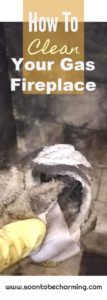
Shop For Your Fireplace!!







Jessica,
Thanks for sharing your project. I want to clean out my fireplace by removing all the old sand, lava rock, and vermiculite but I’m concerned about disturbing the vermiculite because of possible asbestos. Were you concerned about that? Did you do research about removal?
Hi Drew! In my research it seems more common for asbestos to be in vermiculite insulation, but it is possible for it to be in a fireplace. Our fireplace was converted from a wood burning fireplace to a gas fireplace, so with an open chimney shoot there is already air circulation…so we were not concerned about asbestos. I am definitely not an expert though and I would research your type of fireplace and the age it was filled with vermiculite. If you think it might have asbestos, research the proper way to remove it. The main goal is keeping it from getting airborne by wetting it down. Thanks for the question!
Love the logs you have! Do you know what brand/name they are? Thank you!
Hi Jessica! Unfortunately the logs were here when we moved in and I didn’t see a name on them when we took the fireplace apart. However, they are ceramic fiber logs similar to these ones on Amazon https://amzn.to/3c5gtxh. To help you compare…our fireplace has 7 logs (28″ long, 22″long, 3 logs close to 12″ long, and 2 about 8-9″ long). I hope that helps!